9 Types of Mulch: Which Should You Choose?
Find out how to get the best-looking yard on the block


Mulch can have many uses in your yard, from controlling weed growth and maintaining moisture levels to making a play area softer and safer for the kids. The benefits of various types of mulch include protecting plant roots from extreme heat and cold, improving soil quality, and adding color and texture to bare areas.
This guide walks you through the different mulch types, their characteristics, and what they're best suited for so you can choose the right one for your property.
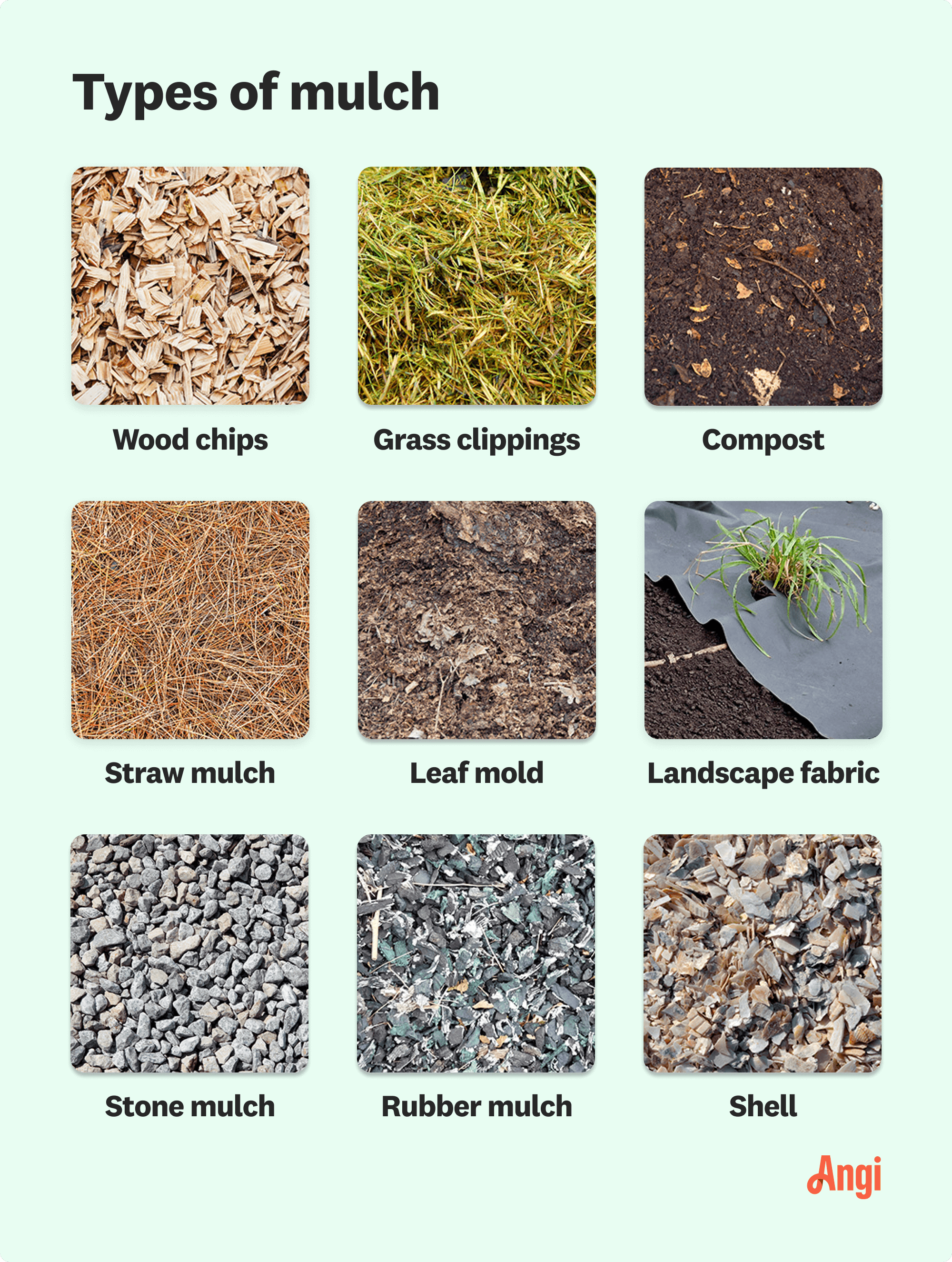
1. Wood Chips
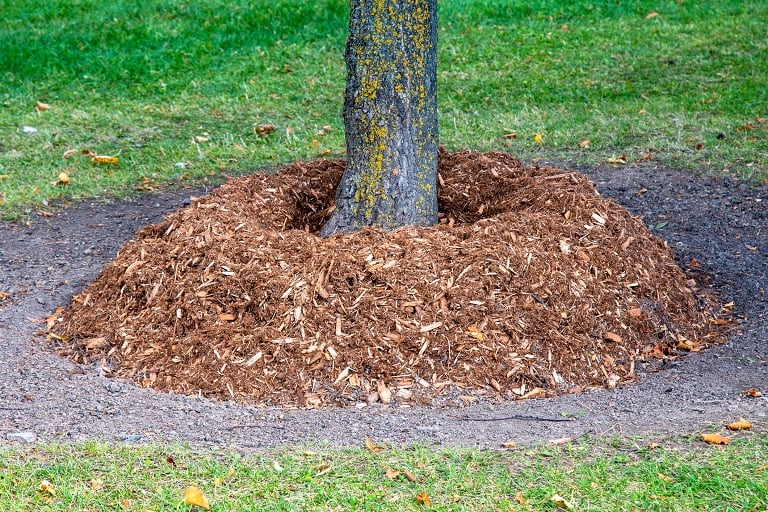
Hardwood and softwood chips or bark make up wood chip mulch. It's often made of waste products from paper and furniture production industries, so as long as it's from sustainably sourced wood, it's a solid, eco-friendly choice for mulch. Once you know how to mulch around trees, laying down wood chips is a quick and easy weekend project to freshen up your landscaping.
Waste wood chips are dried and aged, so you can apply this mulch straight onto your garden beds. If you're lucky enough to score free fresh wood mulch from your local municipality, either let it rot down for a year or only apply it to pathways. Green wood, or wood that has been freshly cut and hasn't dried or cured yet, draws a lot of nitrogen from the soil as it starts to decompose. Letting it sit for a year ensures it passes the nitrogen-gathering stage so that when you eventually apply it to your beds, it slowly releases its stored nitrogen back into your soil.
Also, make a note of what type of trees are in your mulch. Pine is acidic and takes longer to decompose, but is better suited to use around large, established trees and shrubs. Hardwood chippings are more neutral and well-suited to plants and trees of any type and size.
| Pros of Wood Chip | Cons of Wood Chip |
|---|---|
| Helps control weeds | Prone to fungal growth |
| Protects plant roots from extreme temperatures | May attract termites |
| Helps maintain soil nutrients | Decomposes quickly |
Best used for: Annual plant beds, play areas, around trees
2. Grass Clippings
Grass clippings and general shredded garden waste pull double-duty as free mulch. In thin layers, garden waste makes a good, nutrient-rich mulch for flower and vegetable beds. Apply it at the end of the growing season by just tilling or digging it in. Remember not to use clippings from grass that's been sprayed with herbicides, pesticides, or fungicides to avoid contaminating your garden beds.
| Pros of Grass Clipping | Cons of Grass Clipping |
|---|---|
| Adds vital nutrients back into soil | Can spread weeds or lawn diseases |
| Reduces yard waste | Clumps when wet |
| Inhibits weed growth | Not visually appealing |
Best used for: Flower beds, vegetable gardens
3. Compost

Compost produced from your own kitchen scraps is fantastic nutrient-dense mulch for your garden beds—and it's free. It costs you nothing to make your own mulch this way and reduces the waste you send to landfills, so it's great for the environment, too. Due to its organic content and abundance of nutrients, compost is considered one of the best mulches for vegetable gardens.
Composted or rotted-down manure from farmyard animals like pigs, horses, cows, and sheep is also fantastic and high in nitrogen. Both of these mulches slowly release their nutrients into the soil as they decompose. When you dig the top layer in at the end of the season, it helps to condition and improve the soil structure, creating a light, open structure that allows for the free movement of water and air.
A thick layer of compost or manure also suppresses weeds and acts as insulation, warming the soil earlier and keeping heat in longer than bare earth, helping to extend the growing season.
| Pros of Compost | Cons of Compost |
|---|---|
| Eco-friendly | Needs to be replaced/refreshed frequently |
| Nutrient-rich | May have an unpleasant odor |
| Affordable | Attracts pests |
Best used for: Raised garden beds, vegetable gardens
4. Straw Mulch
Straw from wheat, barley, and oats makes a fantastic temporary mulch. It decomposes quickly and doesn't add much in the way of nutrients, but as it gets worked into the soil, it improves structure and drainage. Used around soft fruits and vegetables like strawberries and zucchini, it keeps the delicate fruits off the floor and away from the worst of the moisture and mud that causes rotting. Straw mulch also conserves water and deters slugs and snails.
While mulch delivery and installation costs depend on weight and quantity, straw mulch carries the lowest cost because it weighs very little. In fact, because it's so easy to move, you may be able to transport it and apply it yourself.
| Pros of Straw | Cons of Straw |
|---|---|
| Decomposes slowly | Attracts pests |
| Easy to spread and rake up | May be treated with pesticides or herbicides |
| Protects plants from cold temperatures | Blows around easily |
Best used for: Newly seeded lawns, perennial beds
5. Leaf Mold
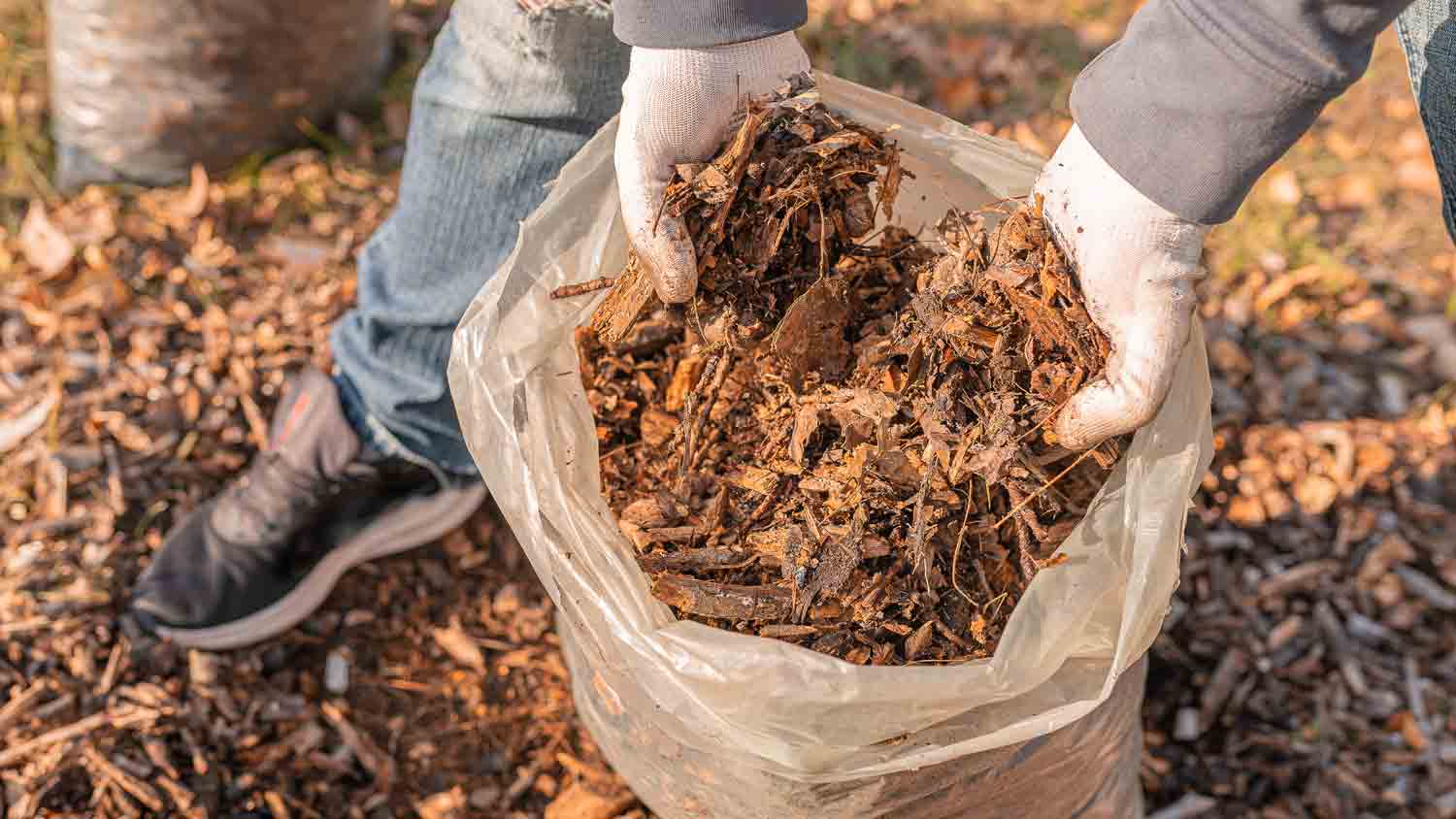
Leaf mold is high in nutrients, but it has to be well-rotted. Fresh leaves can damage plants and harbor insects, fungi, and pathogens. Rake up all of your fallen leaves, or mow them to shred them along with your grass clippings. Place them in hessian or plastic bags with lots of holes poked in to let water through, then let them sit for at least a year.
After this, you'll have rich leaf mold mulch that your garden will love. Like other organic mulches, leaf mold slowly releases nutrients as it breaks down and improves soil structure when you till it into the earth at the end of the growing season.
| Pros of Leaf Mold | Cons of Leaf Mold |
|---|---|
| Increases water retention | Needs to be aged |
| Improves soil structure | Decomposes quickly |
| Encourages earthworms and beneficial organisms | Low in nutrients |
Best used for: Vegetable gardens, raised plant beds
6. Landscape Fabric
The use of landscape fabrics in plant beds allows water and air through but helps suppress weeds. They're not particularly attractive and, alone, are not terribly effective for long. But landscapers usually use these weed-suppressant fabrics in combination with a more appealing top layer such as gravel.
Landscape fabric keeps the gravel or other substrate separate from the soil. So, if you ever decide to get rid of the graveled decorative area, you can do so without having to remove a layer of topsoil because it's contaminated by inorganic mulch particles.
| Pros of Landscape Fabric | Cons of Landscape Fabric |
|---|---|
| Suppresses weeds | Inhibits effective watering |
| Insulates soil | Difficult to install |
| Helps prevent erosion | Usually needs to be covered with another mulch material |
Best used for: Pathways, around mailboxes, foundation plantings
7. Stone Mulch
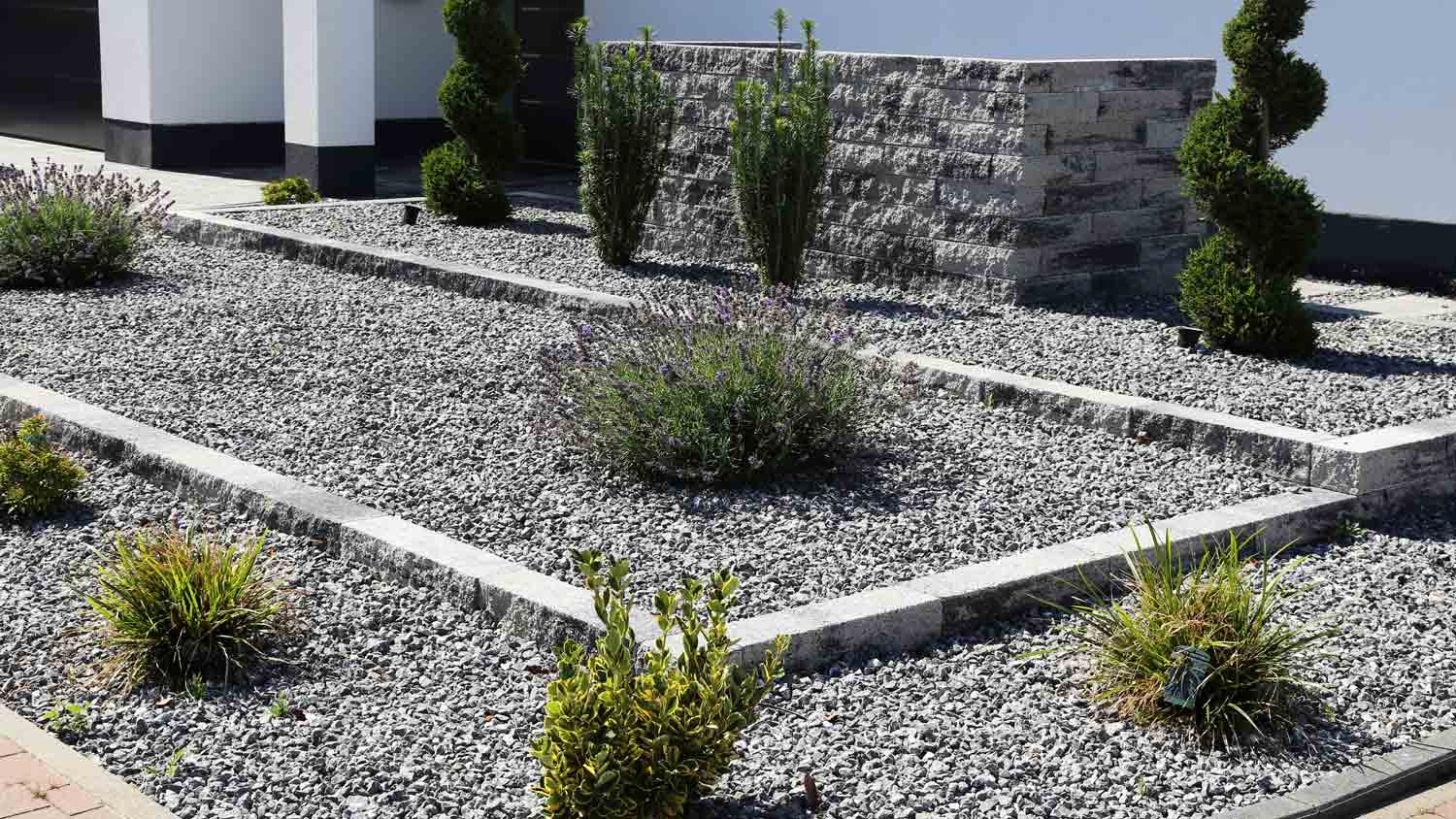
Stone chippings make an attractive mulch alternative for pathways and otherwise barren areas where not much grows. While marble chips and other stone mulches may look striking, you shouldn’t use them around plants, as they can cause heat stress from reflecting heat and ground heating, damaging the foliage and the root systems.
When it comes to deciding between mulch and rock, keep in mind that stone chip mulches also don't retain water well. If there's no landscaping fabric between the chippings and the soil, removal is problematic. You'll need to get a local landscaper to remove and replace the topsoil to get rid of the stone entirely.
| Pros of Stone Chipping | Cons of Stone Chipping |
|---|---|
| Improves drainage | May overheat soil |
| Visually appealing | Difficult to remove |
| Durable | Easily compacted into soil |
Best used for: Pathways, between or around plant beds
8. Rubber Mulch
Rubber mulch is gaining in popularity as a mulching option because it diverts tires from landfill, durable, low maintenance, and is inexpensive. And while it makes an excellent mulch for kids' play areas, it's not advisable for use in the home garden.
Rubber mulch releases compounds and heavy metals that leach into the soil, harm your plants, contaminate your growing space, and eventually make their way into the groundwater. Before laying down rubber mulch, carefully consider where it’s going to be used and ensure it’s not near where you want plant growth.
| Pros of Rubber Mulch | Cons of Rubber Mulch |
|---|---|
| Affordable | Contaminates soil |
| Does not need to be replaced | Not environmentally sustainable |
| Durable | May have strong odor |
Best used for: Play areas, high-traffic walkways
9. Shell
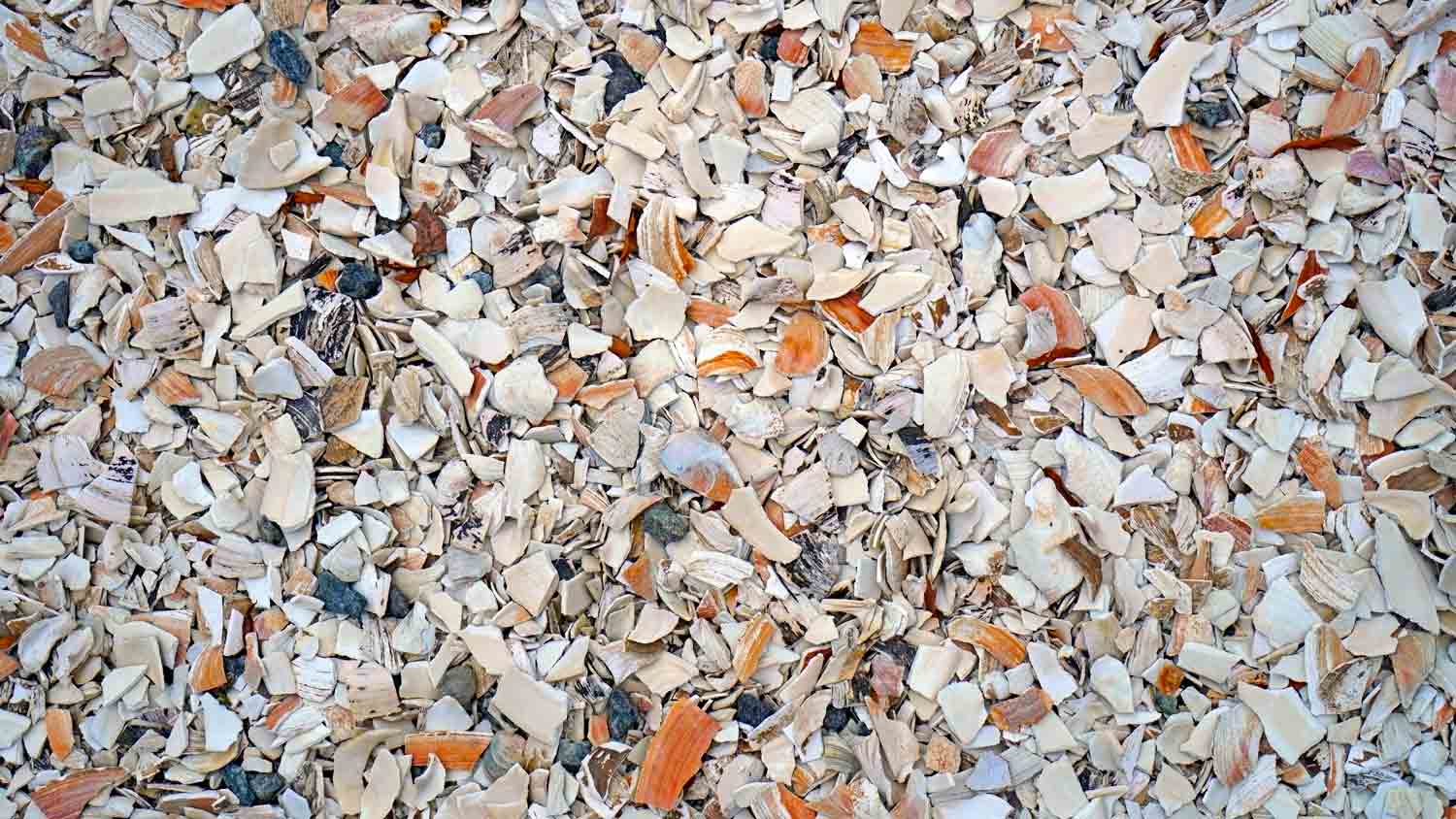
Crushed shells, if sourced sustainably, are a great eco-friendly mulching option for pathways and seating areas. Shells have a reasonably long life span, but they break down as you walk on them, so you'll eventually need to add more. Plus, the shells tend to migrate on your boots or slowly work their way into the beds alongside the path, which isn't a significant issue, but it does deplete them over time.
This is another mulch that needs separating from the soil with landscape fabric if you use it on beds or it's difficult to remove cleanly.
| Pros of Shell | Cons of Shell |
|---|---|
| Long-lasting | Overheats easily |
| Increases water retention | Expensive |
| Suppresses weeds | Difficult to remove |
Best used for: Pathways, courtyards, seating areas
How to Choose the Right Type of Mulch for Your Yard
Which mulch you should pick isn't always obvious. Choosing the right mulch can help your yard flourish, but the wrong one can cause serious issues and even kill off your plants. There are many factors to consider, including whether you want to grow plants through the mulch, create a decorative area in an otherwise bland piece of yard, rejuvenate soil, or create a play area. Your climate also has a significant impact on which mulch you pick, as does your level of commitment to environmental sustainability.
Once you've decided which type of mulch you want, you'll need to figure out how much mulch you need. You'll also need to prepare your landscape for the mulch application, although you can always hire a mulch delivery pro near you to take care of that (and the whole mulching process) for you. You may find that the cost of landscaping is well worth saving yourself the work.





- The Best Times to Put Down Mulch in Your Yard and Garden
- How to Make Mulch for Your Yard
- What Mulch Is and How to Use It in Your Landscape
- 8 Mulching Tips and Tricks for Your Yard
- 11 Mulch Alternatives Worth Trying in Your Garden
- What Organic Mulch Is and How It Compares to Regular Mulch
- How to Mulch Around Trees for a Healthy Yard
- Mulch vs. Rock: Which One Is Right for Your Landscaping?
- Pros and Cons of Rubber Mulch for Your Landscape
- How to Calculate How Much Mulch I Need for My Project
















